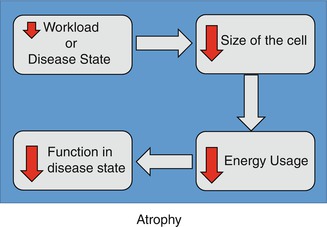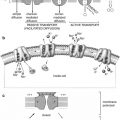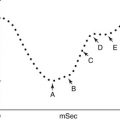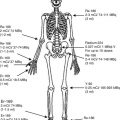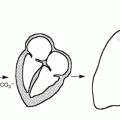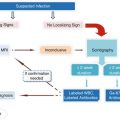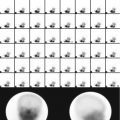Hypoxic: most common
Chemical
Structural trauma
Infectious
Immunological/inflammatory
Genetic derangement
Nutritional imbalance
Table 1.2
Main general responses to injury
Cellular adaptation |
Atrophy |
Hypertrophy |
Hyperplasia |
Metaplasia |
Dysplasia |
Cell death |
Apoptosis |
Necrosis |
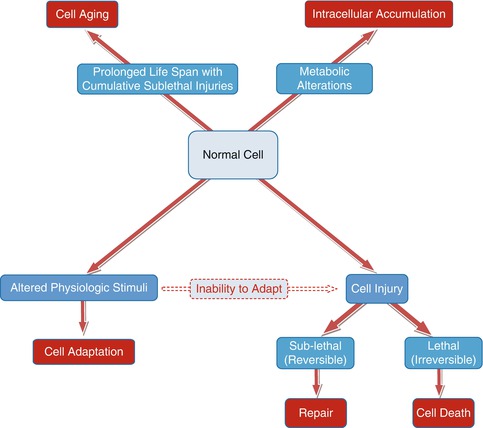
Fig. 1.1
Cell responses to stress and injury
1.6.1.1 Biochemical Cell Injury
Regardless of the nature of injurious agents, there are a number of common biochemical themes or mechanisms responsible for cell injury [4]:
1.
ATP depletion: Depletion of ATP is one of the most common consequences of ischemic and toxic injury. ATP depletion induces cell swelling, decreases protein synthesis, decreases membrane transport, and increases membrane permeability.
2.
Oxygen and oxygen-derived free radicals: Ischemia causes cell injury by reducing blood supply and cellular oxygen. Radiation, chemicals, and inflammation generate oxygen free radicals that cause destruction of the cell membrane and cell structure.
3.
Loss of calcium homeostasis: Most intracellular calcium is in the mitochondria and endoplasmic reticulum. Ischemia and certain toxins increase the concentration of Ca2+ in the cytoplasm, which activates a number of enzymes and causes intracellular damage and increases membrane permeability.
4.
Mitochondrial dysfunction: A variety of stimuli (free Ca2+ levels in cytosol, oxidative stress) cause mitochondrial permeability transition (MPT) in the inner mitochondrial membrane, resulting in the leakage of cytochrome c into the cytoplasm.
5.
Defects in membrane permeability: All forms of cell injury and many bacterial toxins and viral proteins damage the plasma membrane. The result is an early loss of selective membrane permeability.
1.6.1.2 Intracellular Accumulations
Normal cells generally accumulate certain substances such as electrolytes, lipids, glycogen, proteins, calcium, uric acid, and bilirubin that are involved in normal metabolic processes. As a manifestation of injury and metabolic derangements in cells, abnormal amounts of various substances, either normal cellular constituents or exogenous substances, may accumulate within the cytoplasm or in the nucleus, either transiently or permanently. One of the major consequences of failure of transport mechanisms is cell swelling due to excess intracellular fluid. Abnormal accumulations of organic substances such as triglycerides, cholesterol and cholesterol esters, glycogen, proteins, pigments, and melanin may be caused by disorders in which the cellular capacity exceeds the synthesis or catabolism of these substances. Dystrophic calcification occurs mainly in injured or dead cells, while metastatic calcification may occur in normal tissues due to hypercalcemia that may be a consequence of increased parathyroid hormone, destruction of bone tissue, renal failure, and vitamin D-related disorders.
All these accumulations harm cells by “crowding” the organelles and by causing excessive and harmful metabolites that may be retained within the cell or expelled into the extracellular fluid and circulation.
1.6.2 Cell and Tissue Response to Injury
The normal cell is able to handle normal physiological and functional demands, the so-called normal homeostasis. However, physiological and morphological cellular adaptations normally occur in response to excessive physiological conditions or to some adverse or pathological stimuli [3]. The cells adapt in order to escape and protect themselves from injury. An adapted cell is neither normal nor injured but has an altered steady state, and its viability is preserved. If a cell cannot adapt to severe stress or pathological stimuli, the consequence may be cellular injury (Fig. 1.1) that disrupts cell structures or deprives the cell of oxygen and nutrients. Cell injury is reversible up to a certain point, but irreversible (lethal) cell injury ultimately leads to cell death, generally known as necrosis. By contrast, an internally controlled suicide program, resulting in cell death, is called apoptosis.
1.6.2.1 Cell Adaptation
Some of the most significant physiological and pathological adaptations of cells involve changes in cellular size, growth, or differentiation [3, 4]. These include (a) atrophy, a decrease in size and function of the cell (Fig. 1.2); (b) hypertrophy, an increase in cell size (Fig. 1.3); (c) hyperplasia, an increase in cell number (Fig. 1.4); (d) metaplasia, an alteration of cell differentiation (Fig. 1.5); and dysplasia, an abnormal growth or development of cells (Fig. 1.6). The adaptive response may also include the intracellular accumulation of normal endogenous substances (lipids, protein, glycogen, bilirubin, and pigments) or abnormal exogenous products. Cellular adaptations are a common and central part of many disease states. The molecular mechanisms leading to cellular adaptation may involve a wide variety of stimuli and various steps in cellular metabolism. Increased production of cell signaling molecules, alterations in the expression of cell surface receptors, and overexpression of intracellular proteins are typical examples.

